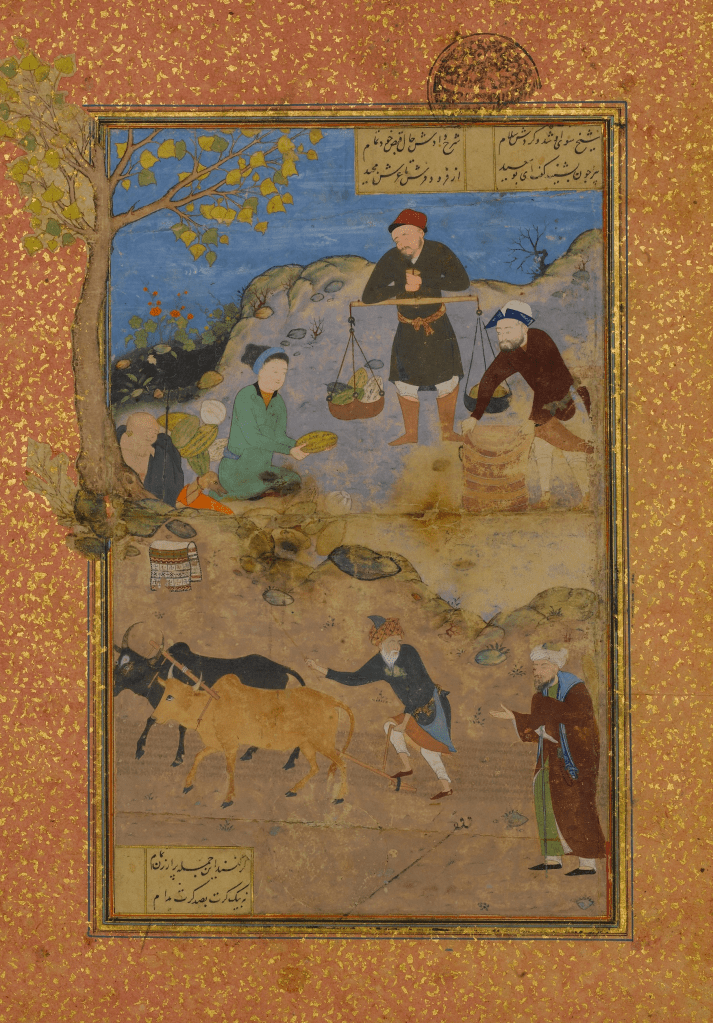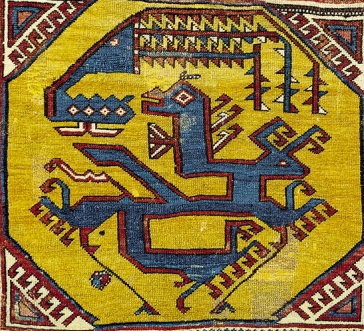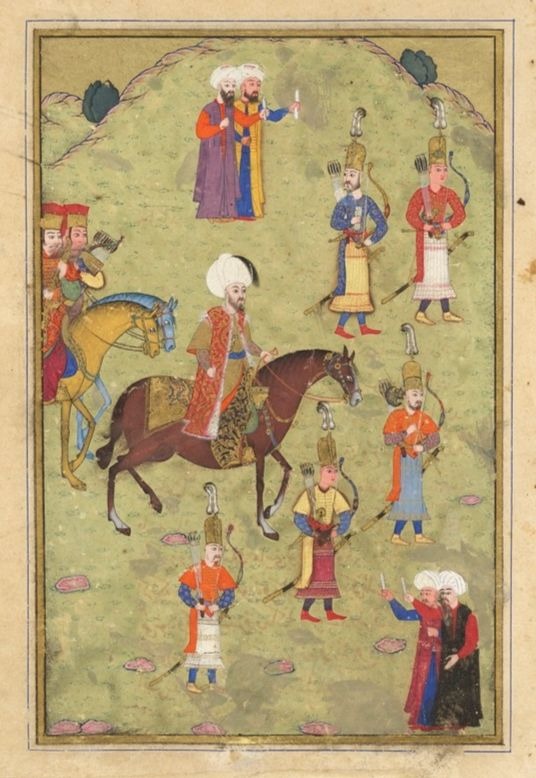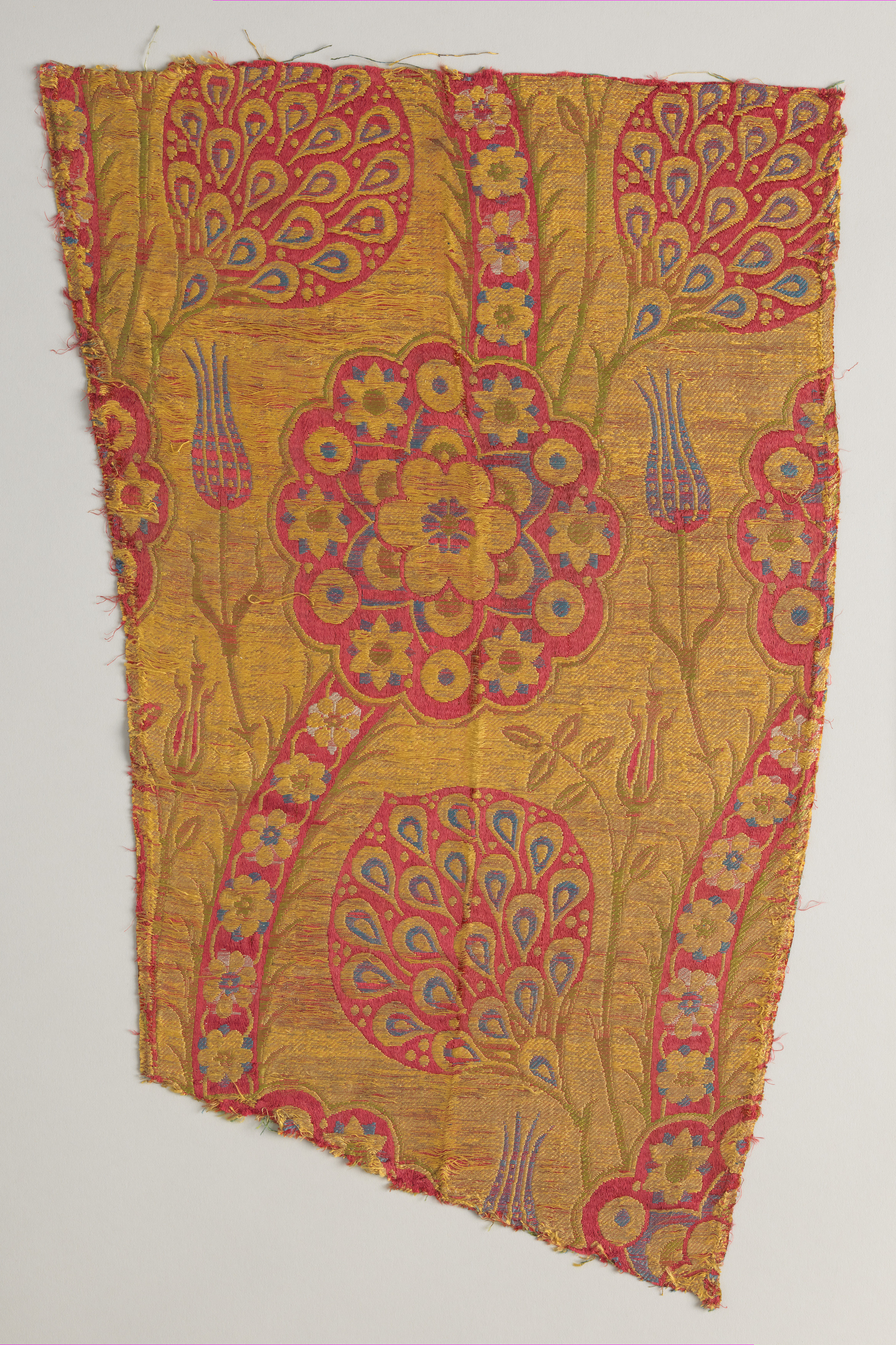
During an Islamicate manuscripts reading group I am coordinating this semester, I was looking around in my archive of digitized manuscripts for some nice examples of marginal texts and came across the manuscript from which the above image comes, a majmū’a (a collective volume of many discrete texts between two covers) of various sorts of material, produced somewhere in the Turkish-speaking part of the Ottoman Empire in the eighteenth century or so. As we read through some of the marginal comments surrounding this particular main text (a compilation of awrād, devotional litanies for use throughout the day), we came to the one in the top right corner of this page. Written in Ottoman Turkish, the note claims to relay information from the tafsīr of al-Nīsābūrī concerning the effaciousness of writing out the names of the Aṣhāb al-kahf, generally known as the Seven Sleepers of Ephesus in Christian tradition, which will ward off all manner of evil and bring much good. Briefly for those not familiar with the story, the ‘Companions of the Cave’/’Seven Sleepers of Ephesus’ were seven (though the number varies in pre-Islamic traditions, variance which is referenced- and not resolved- in the Qur’an) young men who fled from Roman persecution into a cave and were granted divine sleep for three hundred and nine years, awoke to find a totally transformed world in which Christianity was now dominant, disclosed themselves to the wondering population, then died. While the exact origin of the story and devotion to the Sleepers is now obscure, their hagiography circulated in numerous languages, from Sogdian to Old Irish, ending up in the Qur’an as a sizeable portion of Surat al-Kahf (‘the Cave’), alongside other material (including renderings of the names of the Sleepers, which are not given in the Qur’an).
In the marginal notation above only six of the human Sleepers’ names are given out of the usual Islamic seven (a number not however fixed by the Qur’an), plus that of their dog, Qiṭmīr, himself a de facto saint in Islamic tradition (his name has sometimes been treated as prophylactic aid on its own in fact). The notation is brief, but it got me thinking about the textual traces of the Seven Sleepers in the Islamicate world, which I’d like to explore a bit here. The use of names of the Seven Sleepers/Aṣhāb al-kahf provide a good view into the ways in which elements of ‘manuscript culture,’ of the textual materia of the book, crossed over into other media and spheres of life, parallel to the boundary-crossing nature of devotion to and the semantic traces of the Seven Sleepers themselves. As I discuss in a parallel but more philosophical and speculative essay on my Substack, there is a lot that we can continue to glean from this strange story and its incredible historical afterlives.
In Islamic contexts, devotion to the Seven Sleepers was expressed in multiple ways, but two stand out: one, the ‘finding’ and veneration of caves associated with them, to the point that caves reputed to have held the Sleepers in their several centuries of sacred slumber proliferated across the Islamicate world, from Turkestan to the Maghrib (with a similar proliferation present in Christian lands). But even more widespread were the names of the Sleepers: as with several other sites of Islamic devotion, in the general absence of pictorial icons, names and verbal descriptions served as de facto ‘icons’ reproducing the presence and the sacred power of holy figures. In the early modern Ottoman context, beyond Muhammad and his house, verbal ‘icons’ of the Four Rightly Guided Caliphs, of the Ahl al-Badr (fighters and martyrs in the Battle of Badr), and the Aṣhāb al-kahf were frequently reproduced within manuscripts and across other media, in some cases also embedded in other texts. There are no doubt many reasons for this focusing on names; in the case of the Companions/Sleepers, it is partially an inheritance of the late antique heritage, as visible in lines from the sixth century Syriac poet St. Jacob of Serug (translated here by Sebastian Brock):
There were there two wise men, sons of the leading men,
and they reckoned that the Lord would resurrect them,
so they made tablets of lead and placed them beside them,
on them they wrote down the names of the children of light…
Already there is a sense of their names having an important function, if not quite the prophylactic one they would gain in early modern Islam. By whatever routes however, those names- which as we will discuss below, were inherently distinctive just in their spelling- would be the locus of devotion and power for Islamic audiences, and traces of that devotion and power are readily visible in the manuscript tradition.
In the example below, a short poem (for those who do not read Arabic, it is the section marked with what look like red commas) off gives their names in succession and then details the particular potencies of each name when written down, either for a certain thing or upon certain media. The names of the Sleepers are written in red (fifth through seventh lines), the virtues of each then adumbrated in a series from ‘the first’ to ‘the seventh,’ the numbering also rubricated:

Early modern Islamic audiences took such messages to heart: the names of the Companions do indeed appear in many, many contexts outside of manuscripts. Here are two of them: first, a prophylactic seal made in the eighteenth century Ottoman world (Met. 1983.135.11), the text consisting primarily of the Sleepers’ names intertwined; the stamp produced by this seal could have been applied to manuscripts, or perhaps for the production of stand-alone amulets, upon documents, and so forth (perhaps even on walls, one wonders). As with many such calligraphic amuletic devices, human legibility is not primary in terms of the effectiveness of the writing; and in this case, even a cursory look at the writing suggests whose names are given here:

At the other end of portability (well, almost- obviously it was disassembled and moved at some point!) is this fireplace of Iznik tile (V&A 703-1891), built in 1731 for the home of someone quite well off indeed; the names of the Sleepers run across the very middle of the installation, the only instance of text in the entirety of the piece: Continue reading “The Seven Sleepers In Islamicate Textuality: Complex Crossings”























